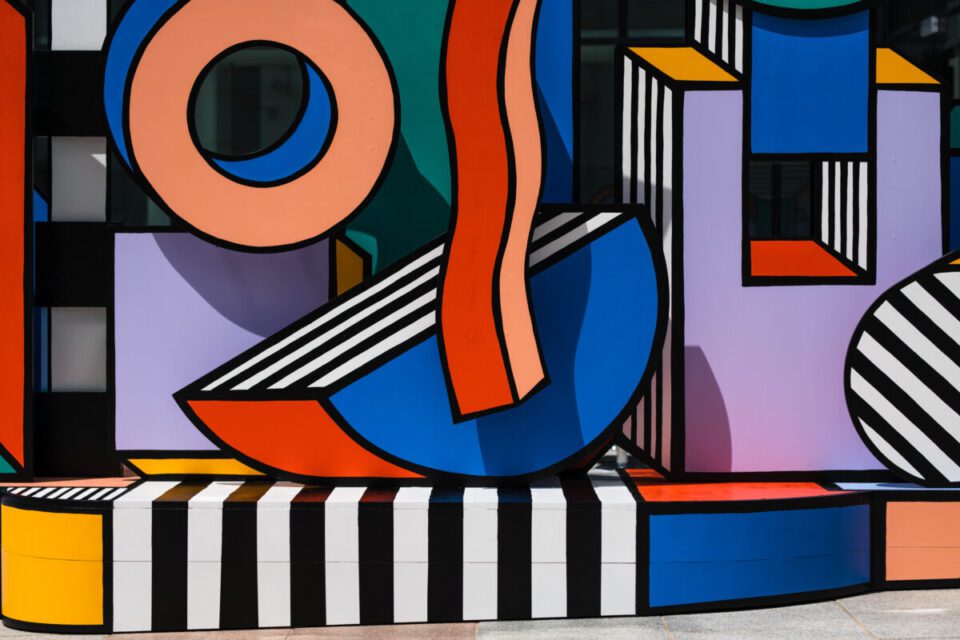Camille Walala’s (b. 1975) brightly patterned geometric artworks are a recognisable feature of Britain’s urban landscapes. She has been particularly prolific in London, creating large-scale wall murals for building fronts in Shoreditch, zebra crossings outside Tate Modern, new facades for canal boats and even an artist-designed supermarket for the Design Museum. The latest sculpture, Putting Things In Perspective, was commissioned by The Box in Plymouth and recently installed at Tavistock Place, the city’s newest public square. Playing with tricks of perspective, this large, freestanding two dimensional work offers illusions of colour-saturated, pattern-speckled depth, reflecting a longstanding interest in architectural themes and effects.
Plymouth, on England’s south coast, was historically an important port city, and the sleek lines and colour planes of Putting Things In Perspective partly bring to mind the ocean liner aesthetic of early 20th century modernism. The use of illusory three dimensional space and bright colour contrasts is even reminiscent of the military dazzle patterns created by artists such as Edward Wadsworth (1889-1949) during WWI. At the same time, the work shows an obvious affinity with Pop and Op Art. The artist describes her processes of “finding the right tone for each colour” and “spending time painting and experimenting,” methodical approaches reminiscent of Victor Vasarely (1906-1997) or Bridget Riley (1931- ), whose optical effects are a result of precisely honed colour contrasts as much as feints of line and shape. The style of Walala’s public murals has also been compared to that of Roy Lichtenstein, because of the use of sharp, bold lines, unsullied colour blocks and commercial-style perfection.
However, this piece also represents a departure from aspects of Walala’s established working method. It’s a stylistic evolution which, perhaps, reflects the more solitary, manual working methods that many artists were forced to adapt to during the pandemic. “After the intensity of the last year,” the artist remarks, “I find myself more attracted to softer lines, drawn by hand. I want them to be slightly imperfect. This year has been a good lesson in letting go.” Or indeed, putting things in perspective. This new piece is a gathering of organic shapes – circles, rings, steps, curvaceous lines – which inhabit a more loosely defined space than the precisely measured lines and grids of East London’s Dreams Come True building (2015), for example. This new, spontaneous approach establishes a connection with the intuitive mark-making of Jean Dubuffet, particularly his L’Hourlope series (1962-1974).
Like all of the sculptor’s previous works, this latest installation is motivated, above all, by the aim of bringing pleasure to viewers. It’s an aim more valuable than ever at a time of ongoing national crisis. “I always want to create an optimistic, happy mood, and I think the colour and pattern I use is a great way to do that… I always try to bring out people’s inner child.”
Until 5 September at The Box, Plymouth. Find out more here.
Words: Greg Thomas
Camille Walala, Putting Things In Perspective. Images courtesy The Box, Plymouth.





